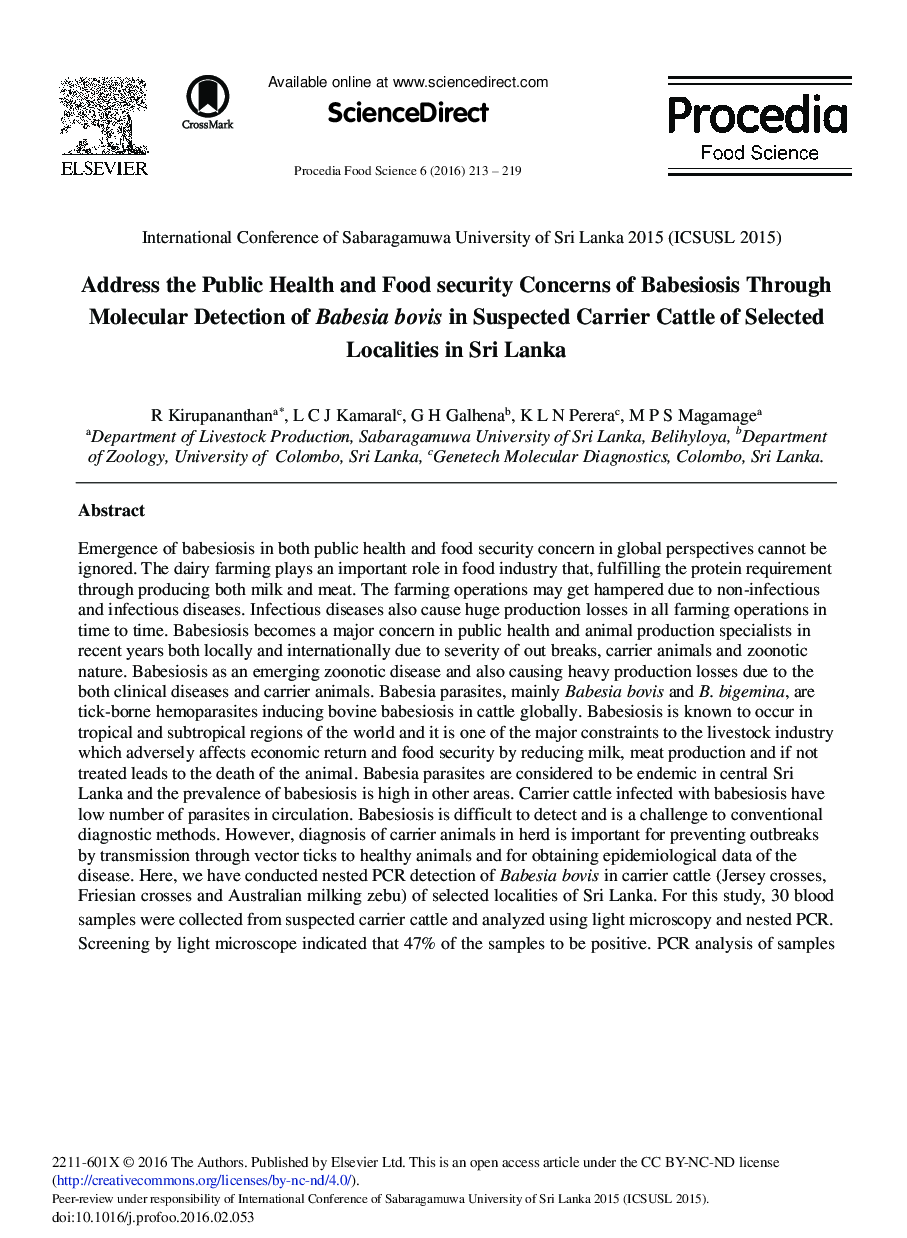| Article ID | Journal | Published Year | Pages | File Type |
|---|---|---|---|---|
| 1266208 | Procedia Food Science | 2016 | 7 Pages |
Emergence of babesiosis in both public health and food security concern in global perspectives cannot be ignored. The dairy farming plays an important role in food industry that, fulfilling the protein requirement through producing both milk and meat. The farming operations may get hampered due to non-infectious and infectious diseases. Infectious diseases also cause huge production losses in all farming operations in time to time. Babesiosis becomes a major concern in public health and animal production specialists in recent years both locally and internationally due to severity of out breaks, carrier animals and zoonotic nature. Babesiosis as an emerging zoonotic disease and also causing heavy production losses due to the both clinical diseases and carrier animals. Babesia parasites, mainly Babesia bovis and B. bigemina, are tick-borne hemoparasites inducing bovine babesiosis in cattle globally. Babesiosis is known to occur in tropical and subtropical regions of the world and it is one of the major constraints to the livestock industry which adversely affects economic return and food security by reducing milk, meat production and if not treated leads to the death of the animal. Babesia parasites are considered to be endemic in central Sri Lanka and the prevalence of babesiosis is high in other areas. Carrier cattle infected with babesiosis have low number of parasites in circulation. Babesiosis is difficult to detect and is a challenge to conventional diagnostic methods. However, diagnosis of carrier animals in herd is important for preventing outbreaks by transmission through vector ticks to healthy animals and for obtaining epidemiological data of the disease. Here, we have conducted nested PCR detection of Babesia bovis in carrier cattle (Jersey crosses, Friesian crosses and Australian milking zebu) of selected localities of Sri Lanka. For this study, 30 blood samples were collected from suspected carrier cattle and analyzed using light microscopy and nested PCR. Screening by light microscope indicated that 47% of the samples to be positive. PCR analysis of samples diagnosed 80% as positive. Hence, 33% of the animals appeared to be healthy through routine light microscope diagnosis were in fact carriers posing a threat for the healthy herd population. The high prevalence of babesiosis in carrier cattle in Sri Lanka emphasized that island-wide control and prevention programs against bovine babesiosis are needed to minimize the financial burden caused by the parasites to reduce to production losses. This preliminary study on molecular detection of Babesia bovis in selected localities offers a rapid and efficient screening method for suspected carrier herds while providing new avenues to minimize losers incurred in milk production due to unidentified carrier animals.
